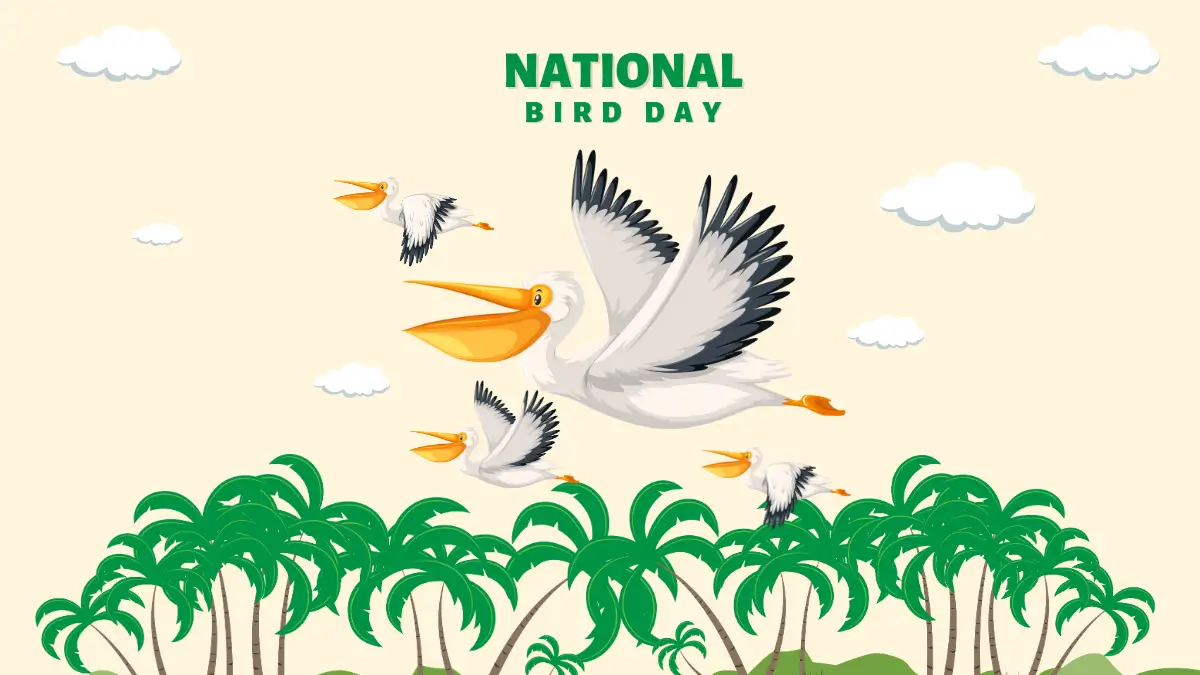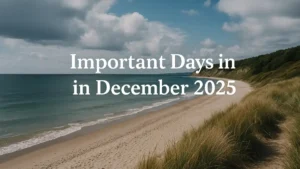National Bird Day, celebrated annually on January 5, is a day dedicated to highlighting the importance of birds in our ecosystems and fostering efforts toward their conservation. This day is an opportunity to appreciate the beauty, diversity, and ecological significance of birds while raising awareness about the challenges they face due to human activities.
First established in 2002 by the Avian Welfare Coalition, National Bird Day underscores the urgency of protecting bird habitats and populations that are under threat from habitat destruction, climate change, and illegal trade.
The History and Origin of National Bird Day
National Bird Day was initiated by the Avian Welfare Coalition to address the welfare of birds, both in the wild and in captivity. The chosen date coincides with the birth of the wild bird preservation movement in the early 20th century, which laid the foundation for modern bird conservation efforts.
Historically, birds have faced numerous challenges, such as:
- Hunting for feathers and meat.
- Habitat destruction due to deforestation and urbanization.
- The illegal pet trade, which removes millions of birds from their natural habitats.
The day also commemorates the work of conservationists and environmental groups that have made significant strides in protecting endangered species, including the Bald Eagle and the California Condor, both of which were once on the brink of extinction but have since seen remarkable recoveries.
Why Celebrate National Bird Day?
The celebration of National Bird Day is rooted in recognizing the critical role that birds play in maintaining the balance of our ecosystems. Birds are:
- Pollinators that help plants reproduce.
- Seed dispersers that aid in forest regeneration.
- Indicators of environmental health, as their presence or absence often reflects the state of their habitats.
Despite their ecological importance, many bird species face severe threats, such as deforestation, urbanization, and climate change. By celebrating National Bird Day, individuals and organizations can:
- Raise awareness about the plight of endangered bird species.
- Promote sustainable practices to protect bird habitats.
- Encourage community involvement in conservation efforts.
Challenges in Bird Conservation
1. Habitat Loss
Habitat destruction is the primary threat to bird populations worldwide. Forests are being cleared, wetlands are drained, and grasslands are converted into agricultural land or urban areas. This leaves birds with fewer places to nest, feed, and migrate.
2. Climate Change
Climate change alters migration patterns, food availability, and breeding conditions. Many bird species struggle to adapt to the rapid changes in their environments, leading to population declines.
3. Illegal Poaching and Pet Trade
The illegal capture and trade of birds for the pet industry continue to threaten numerous species. Popular birds like parrots and songbirds are often taken from the wild, leading to a decline in their populations.
Bird Conservation Success Stories
While challenges persist, conservation efforts have yielded inspiring success stories:
- California Condor: Once reduced to just 27 individuals in the 1980s, this species has been brought back through captive breeding programs and habitat restoration. Today, their population is steadily increasing.
- Bald Eagle: Declared endangered in the 1960s due to habitat loss and pesticide use, the Bald Eagle has made a remarkable recovery and is now a symbol of successful conservation efforts.
These examples underscore the importance of sustained efforts and highlight the role individuals and organizations play in bird conservation.
How to Observe National Bird Day
National Bird Day can be celebrated in various meaningful ways, including:
1. Birdwatching
Birdwatching is a popular activity that allows individuals to appreciate the diversity of bird species. Observing and documenting birds also contributes to citizen science projects that help track population trends and migration patterns.
2. Supporting Conservation Groups
Many organizations work tirelessly to protect birds and their habitats. Donating to or volunteering with such groups can make a significant impact.
3. Promoting Awareness
Sharing information about endangered bird species on social media, hosting educational events, or organizing fundraisers can help spread the message of bird conservation.
4. Visiting Sanctuaries and Zoos
Local wildlife sanctuaries and zoos offer opportunities to learn about bird species and the challenges they face. These visits can inspire a deeper commitment to conservation.
The Role of Birdwatching in Conservation
Birdwatching is more than a hobby; it is a crucial tool in conservation. Birdwatchers:
- Gather valuable data on bird populations and migration patterns.
- Contribute to local conservation programs.
- Foster a connection with nature, which increases public awareness and support for bird protection initiatives.
How to Get Involved in Bird Conservation Year-Round
Conservation efforts shouldn’t be limited to National Bird Day. Here’s how individuals can contribute throughout the year:
- Support Wildlife Organizations: Donate to or volunteer with groups focused on bird protection.
- Reduce Carbon Footprint: Combat climate change by adopting sustainable practices, such as using public transport or planting trees.
- Plant Native Vegetation: Native trees and shrubs provide food and shelter for local bird species.
- Educate Others: Raise awareness about the importance of birds and their conservation.
Even small actions can collectively make a big difference in ensuring the survival of bird species for future generations.
Summary of National Bird Day 2025
| Category | Details |
|---|---|
| Why in News | National Bird Day, observed annually on January 5, raises awareness about bird conservation. |
| Established By | Avian Welfare Coalition in 2002. |
| Purpose | Highlight the ecological significance of birds, their conservation, and challenges they face. |
| Historical Context | – Initiated to address bird welfare in the wild and captivity. |
| – Coincides with the early 20th-century wild bird preservation movement. | |
| Key Challenges | – Habitat loss due to deforestation and urbanization. |
| – Climate change affecting migration and breeding patterns. | |
| – Illegal poaching and pet trade. | |
| Ecological Importance | – Pollinators aiding plant reproduction. |
| – Seed dispersers for forest regeneration. | |
| – Indicators of environmental health. | |
| Conservation Successes | – California Condor: Recovered from 27 individuals in the 1980s to growing populations. |
| – Bald Eagle: Removed from the endangered list due to habitat restoration and pesticide bans. | |
| Celebration Activities | – Birdwatching: Promotes awareness and citizen science. |
| – Support Conservation Groups: Donations and volunteering for bird-focused organizations. | |
| – Educational Campaigns: Social media, fundraisers, and local events. | |
| – Visiting Sanctuaries and Zoos: Learn about birds and conservation efforts. | |
| Year-Round Actions | – Support wildlife organizations through donations or volunteering. |
| – Reduce carbon footprint to combat climate change. | |
| – Plant native vegetation for bird habitats. | |
| – Educate others about bird conservation. |



 Goa Liberation Day 2025: History, Signif...
Goa Liberation Day 2025: History, Signif...
 Important Days in December 2025, Nationa...
Important Days in December 2025, Nationa...
 International Migrants Day 2025: Meaning...
International Migrants Day 2025: Meaning...







